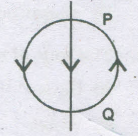Mental Ability Test - Reasoning ( Verbal )
SAT - Science - Physics 12 chapters 1898 Questions
- Motion
233 Question - Force
184 Question - Work and Energy
194 Question - Sound and Wave Motion
187 Question - Heat
73 Question - Light
224 Question - Current Electricity
210 Question - Magnetic Effects of Electric Current
183 Question - Sources of Energy
125 Question - The Universe
121 Question - Gravitation
123 Question - Mechanics
41 Question


